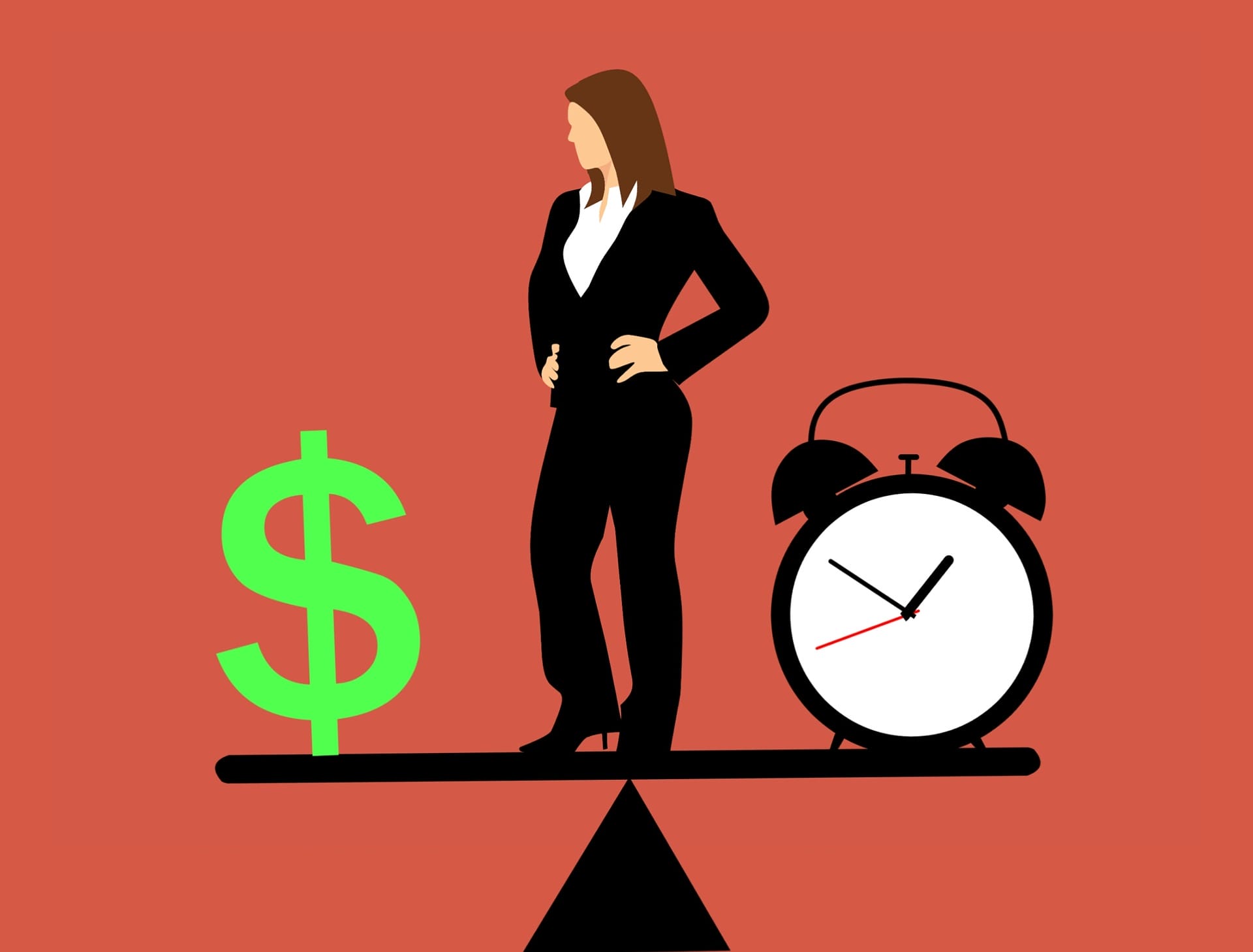Pricing your work as a photographer can be the trickiest part of starting to sell your photos. How much are you worth as a photographer?
But more importantly, how do you find out?

Too many photographers under or overprice their work when selling. But in this iPhotography guide to pricing your work we’ll help you come up with an exact number that you can stick on those price tags to reflect your experience.
Whether you’re a beginner or an amateur who’s looking to make money from your photos, then you’ll find this article the perfect first step to achieving that dream.
Furthermore, if you’re a semi-pro looking to go full-time it’s worthwhile reviewing your pricing structure to make sure you’re maximising your talents.
Two ways photographers make money is by either selling their work as prints or sometimes as stock images online, but the income you make from this is fixed and out of your hands.
Alternatively, you could put yourself out for hire as a wedding photographer for example and clients will hire you based on a package. This package will include different products – prints, albums, CD’s etc. and it will factor in all the other aspects we are going to talk about.
It’s up to you which way you choose to earn. Use the following points to adapt to your situation. Not all the points may be relevant to you now, but it’s worth knowing the more you rely on this source of income.

Firstly, consider the cost of any photography education or training you’ve undergone up until this point. The more experience you have, which is shown in your work, the higher you can price your work legitimately.
The length of time you have been in training and practising as a photographer will increase over years. Therefore, you can slowly increase your experience cost to customers without there being a big jump when/if you decide to go pro.
With that in mind, it is possible for an amateur photographer to charge the same as a professional as you could have similar levels of training, but just one of you never went pro out of choice. Therefore, don’t think because you don’t need the money that you’re not worth it. You are.
In addition to that, it is dangerous to undercharge your services at an earlier stage just ‘to get the balling rolling’ and guarantee more sales.
It will only hamper you in the future if you go pro. No business can sustain selling one product at £20 for a period then jump up to £200 because they now need to pay the bills with this revenue – loyal customers will just go elsewhere.
Instead, price your work as you mean to go on. At least when you do offers or packages then clients will see the true value. Too many new photographers under-price their work and it deflates the whole industry’s value.

In all honesty, you’re not the only photographer in your area. It would be nice to have the whole market to yourself, but invariably you’ll come across some competition. How can you use your competition to an advantage?
Have a look at other local photographers’ websites and find out the prices they charge to give you a benchmark. It also is a brilliant opportunity to check the standard of their photography and see who they are marketing to.
Knowing who is being targeted allows you to join in or see the gaps that you could exploit. Furthermore, you should assess your competition’s pricing points.
• How much are they charging for certain print sizes?
• Do they offer packages?
• Do they appear to be selling lots?
All this information will help you see what is successful and how you could price your work. Don’t try to price your work just below your competitors, price is based on your needs, but be aware of what others are doing and if they do it well.

Photographers will inevitably need to add more items to their kit bag as time goes by.
You need to build in the cost of your photography equipment when it comes to pricing your photos. We’re not saying charge everyone thousands for one print, because that’s what your camera costs. Instead find out how much it is to hire a camera, such as yours, for a day.
The same goes for lenses, tripod etc. This will give you a daily kit cost, so if someone hires you for the day you know how much it would have cost them to buy the camera kit you use themselves.
There is also repeated costs that need to be accounted for too. Memory cards need to be replaced at times and storing photos requires more hard drives the bigger your library gets, so factor in these costs too. In addition to this you should account for general wear and tear to your kit. Your camera may need to get repaired or serviced once a year, again another cost to factor in.
Breakdown the annual costs of these items and determine how much you shell out for them per month to work into pricing your photos.
Remember to include other expenses in your materials such as:
• Printing photos
• Designing albums
• Camera cleaning equipment

This will be the largest factor to consider when pricing your work. How much time you spend on your photography (not just taking the photos) is where you need to make it count.
It’s easy to spend 3 days taking pictures but only capture 10 saleable shots. Keep track of how many successful images you capture on every outing/session and aim to increase the success rate every time. Capturing 50 saleable images over 2 days, instead of 4, will increase revenue by reducing your own costs for example.

If you want to be a pro, treat the pricing of your time as a full-time job. What type of salary would you be earning (sensibly) if you weren’t a photographer?
Take that monthly income figure and set that as your goal to achieve through your side hustle. You may not get anywhere near it initially but as time goes by. But the stronger your photography becomes and the more places you market your work, the revenues will increase helping you get closer to that figure.
When you can achieve that figure regularly then it may be worth considering making the jump to going pro.
Alternatively, if you are spending 10 hours a week for example, working on your photography business (planning, shooting, editing etc) and not looking at going pro, then approach it differently.
Instead multiply the hours you work with an hourly rate, taken from the total cost of all other factors that we’ve talked about so far. Add in an extra 10% to give yourself a little profit too. At least this way, you’ll never be out of pocket from your photography time and investments. You may only be breaking even but at least you get back exactly what you put in.
Remember to include other expenses in your time such as:
• Travel (petrol, taxis, public transport tickets)
• Food
• Setting up your equipment
• Postproduction editing

We’ve just mentioned costing in time spent on post-production in our last section, but it’s worth looking at in more detail as you the time you spend will change.
You may not even need or want to edit your photos, if so, great, it’ll only save time. But in truth, you will spend time editing. In fact, you’ll spend a lot of time editing for three reasons.
Being a portrait or family photographer means you’ll need to be paying close attention to the presentation of your clients when editing. Is there skin smooth? Do they look their best? Do you need to edit expressions etc? Imagine editing 40-50 pictures in this way for one session. It will take hours. And what about re-edits? A client may want further changes made after a preview, so you need to charge them an hourly rate for further changes.
Your photographs aren’t just for your customers. You’ll also use them for advertising purposes. Wedding photographers exploit social media to its fullest and show off their most recent work. Pictures on Instagram for example may require a different crop from what you’ve been using. Again, more time editing to suit the marketing opportunities. It is worth saying Lightroom and Photoshop allow you to make pre-sets to crop images in set dimensions, making it possible to batch edit pictures.
It is very rare for a photographer to stick to one method of editing for a lifetime. They will learn new tricks, shortcuts, more efficient processes and it takes time to discover these methods. You need to invest time into your Photoshop or Lightroom skills, just like your photography one. There’s always a new trend to watch out for that your customers would love to see.

When it comes to pricing your work overheads normally only get considered by professionals as this is their primary income source. Though if you are working towards this status then you need to be aware of these extra costs in your pricing.
There are 2 types of overheads – fixed and variable. We’ve outlined them both with a few example costs you should aim to cover.
o Rent / Mortgage
o Insurance premiums
o Utilities (electricity, gas, water)
o Taxes (business and personal)
o Subscriptions / Accreditations
o Food
o Travel / Transport
o Other direct debits
o New equipment
o Repairing kit
o Assistant fees
o Printing costs
o Pre-shoot consultations
o Posting & packaging
Add in extra costs to your overheads where necessary.

To entice your clients into your photography you may at times need to offer promotions on your work. Creating packages and bonuses are a great idea depending upon your business.
For example, a landscape photographer who’s selling prints at a local market may offer a 3 for 2 promo or 10 for 7. Either way, make sure when you split the individual unit cost down, in any promotion, that it doesn’t go below your red lines and ends up leaving you in debt.
Portrait photographers sometimes offer clients a low session fee to encourage them to try out the shoot in hope that when it comes to the viewing the client will spend more at the backend levelling out the costs overall.
Expecting a family to shell out hundreds or thousands on a photographer who they don’t know is misguided. Instead, gently lead them in at a low cost and blow them away with your skills so they’ll want to spend lots of on the finished article.
However, you price your work with packages then make sure you don’t trip yourself up. We’ve seen instances before where photographers sell prints at £20 per print, but then offer a bundle of 10 for $200. The package may sound great but if they look further then it may not be actual value for money. Therefore, make any discount genuine.

In conclusion, when you take all of these factors and elements, you’ll start to get yourself a figure in mind that you want to achieve per print, per session, per day etc, depending on your market and strategy.
Make that figure your red line and don’t go beneath it where possible. It’s all too easy to chase them dollar bills but if you are serious about building a business, build it from a solid base by pricing your work suitably and sticking to it.
To tell the truth, it may take time for you to achieve your goals of going pro. You may not be hired or selling your work every day either. But if you price your photos/services based on what you need to achieve, if you were working full time, the more work you get the closer you’ll get to financial success.
Let us know if you’ve found this guide to pricing your work as a photographer has helped you get a better grip on how to do it.
Finally, we’d love to hear from you if you’ve got any further questions about going pro. There could be more areas we need to discuss to help you turn your hard work and beautiful photography into cash!
Thanks to our friends at Pixpa you can get 50% OFF on annual plans when you subscribe with the promo code ‘PXREF50′.
Discover the BEST way on how to clean a camera sensor using swaps, rocket blowers and pencil brushes to give your shots a dust-free finish!
Capture the magic of the night with our beginner’s guide to night photography. Learn tips and techniques for stunning results.
Master the art of solar eclipse photography with expert tips on equipment, settings, and precautions for stunning celestial images.
Learn the basics of photography – fast – with our FREE 60-Second Photographer online course. Each class is short and sharp with simple, actionable steps that give you immediate results.
x 30 lessons

© iPhotography™
Become a confident and competent photographer in less than 30 minutes!
Before you leave, make sure you’ve secured your FREE online photography course (worth £29.99)
Each class is just 60-seconds or less making it the fastest and easiest way to learn photography!